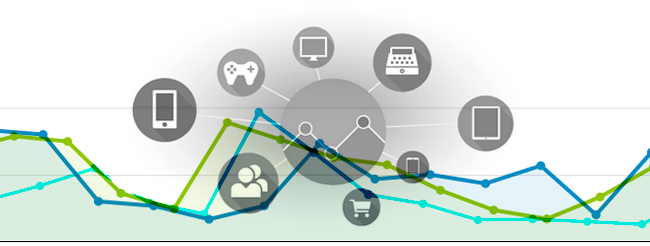
So…., what’s new?
Many may be familiar with the existing Google Analytics platform, its evolution over the years since its release in 2005, its benefits and indeed its flaws.
Currently in beta, Google have released a Universal Analytics tool set features to their well known analytics platform. The aim is to change the way that data is collected and organised in this rapidly evolving online world of multiple platforms. Multiple platforms is not just limited to Desktop, tablet, phone, but indeed spread to the likes of game consoles, the point of purchase (POP), the shopping trolley, ski lift, billboard and so on.
The future of data does indeed seem to be blurring the lines between online and offline, and with these new tools, we can hope to make a little more sense of it all and, more to the point, paint a better picture for the brand, the client, or our own understanding.
Through an understanding of this data, business and individuals can better understand how visitors interact with their business online. The following are some of the key updates available with Universal.
-
New data collection methods:
Universal Analytics introduces the analytics.jscode snippet as the primary collection method for websites. This JavaScript is more flexible than previous the Google Analytics ga.js JavaScript, giving you more customisation options of your data.
-
Simplified feature configuration:
Universal Analytics exposes options in the Analytics admin interface that were previously only accessible through the development environment. With Universal Analytics, it’s easier to customise configuration settings, like your campaign timeout handling and search term exclusions.
-
Custom dimensions & custom metrics:
Custom dimensions and custom metrics are like default dimensions and metrics, except you create them yourself. Use them to collect data that Google Analytics doesn’t automatically track.
-
Multi-platform tracking:
With the Measurement Protocol, and additional collection methods introduced by Universal Analytics, you can collect and send incoming data from any digital device to your Analytics account, so you can track more than just websites.
Real world implications
For data analysts –
Capacity to link up data in CRM system with Analytics data to provide more accurate results, making data results more customer-centric rather than visitor-centric is a significant win to translating the value of online marketing activities in greater detail. Dimension widening – having the capacity to add additional customer specific information (Customer ID coming soon) to provide context around the data should greatly improve the uniqueness of each customers interactions.
Having the ability to better understand opportunities for a client regarding platform, segment, user behavior and linking offline to online activities can now be gleaned from these new data sources. You can check out usage guideline documentation following Universal Analytics usage guidelines
For brands
Knowing where to spend time and money based on how and where people are using their site and just where the return on investment is coming from for their marketing dollar. This data with greater insight should shape how they evolve their online and offline business in terms of development, marketing and positioning. Detailed insight into a significant element of their business (the customer) is surely a win for any forward thinking, data driven organisation.
For users (the customer)
With this data available, more and more businesses can take this information to provide a better user experience based on not only the device a customer is browsing in on at any given time, but by customising the experience to them based on their unique information gathered via Google Universal and their historical onsite behavior. Serving me what I want to see or relevant offers based on my behavior on their site does sound appealing!
Following is a video of a real world example, showing how a company is using the new tools available to better determine solutions for their customers.
The drawbacks?
Because Universal Analytics is primarily an innovation of data collection methods, there are no new reports at this time, but any custom dimensions & metrics will appear in existing reporting.
Currently there is a data limit for accounts allowing for data processing might be restricted to once a day if collection exceeds these limits. data that we collect cannot be merged or reprocessed.
If you want to use Universal Analytics with a website you’re already tracking you should use the ga.js and the analytics.js tracking code concurrently and send the data to separate properties to avoid the possibility of wanting to merge or transfer data as this is not currently possible! Currently not all data integration is supported. (such as AdSense and Re-marketing to name two).
Because Universal Analytics is only available in beta, some of the features might change as Google further develop the technology (but this should be a good thing …right?).
So, you have this new data, what now?
The real key to all this information gathered from this new tool set is of course to use it to create a better experience for your site visitor and or your brand! The ability to improve how you engage with your followers and how you evolve your brand online in this changing space are significant wins from Universal Analytics – here’s hoping we are on our way to clearer data for the future, but most importantly, better implementation of solutions provided in conjunction with this data!
Dan Petrovic, the managing director of DEJAN, is Australia’s best-known name in the field of search engine optimisation. Dan is a web author, innovator and a highly regarded search industry event speaker.
ORCID iD: https://orcid.org/0000-0002-6886-3211
